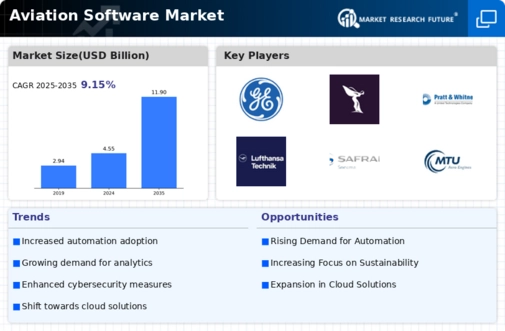Market Analysis
In-depth Analysis of Aviation Software Market Industry Landscape
The global aviation software market is set to reach US$ 7.69 BN by 2032, at a 9.15% CAGR between years 2023-2032. The market is characterized by dynamically growing and constantly developing technological innovation, which significantly influences its improvement of efficiency, safety, in general the capabilities for operation within aviation industry. Aviation software refers to a wide array of applications that commence from flight operations and maintenance management, air traffic control systems up to passenger experience solutions. Increased demand for effective operations and efficient decision-making processes is one of the major influencers driving this market. Airlines and aviation organizations are using software solutions to improve flight planning, scheduling crews, maintenance of aircrafts which has improved operational efficiency as well cost-effectiveness. In aviation, the emphasis is placed on safety as a major concern and software plays a significant role in this regard. Aviation software consists of more advanced systems for avionics, navigation and collision avoidance that allows aircraft to run within prescribed safe boundaries. Furthermore, aviation software is useful in regulatory compliance so that organizations are able to meet high standards and certification requirements. Another important shaper of the Aviation Software market is related to passenger experience. Airlines are spending significant amounts of money on software solutions to improve the travel experience, from booking and check in to inflight entertainment and post-flight services. Customer relation management systems help airlines to provide personalized services, control the loyalty programs and capture useful information about passengers’ tastes. Aviation software is essential in the current context where travellers expect their connectivity anytime and anywhere, providing customers with a uniformly streamlined digitally integrated experience at every step of his journey. The market dynamics of Aviation Software are influenced by technological advancements especially on cloud computing and data analytics. Cloud-based solutions provide scalability, flexibility and cost savings for aviation organizations to look at large data sets in real time. Combined with AI, big data analytics allows predictive maintenance, fuel optimization and demand forecasting which gives airlines and operators the actionable insights required to improve decision making capabilities as well as operational efficiencies.










Leave a Comment